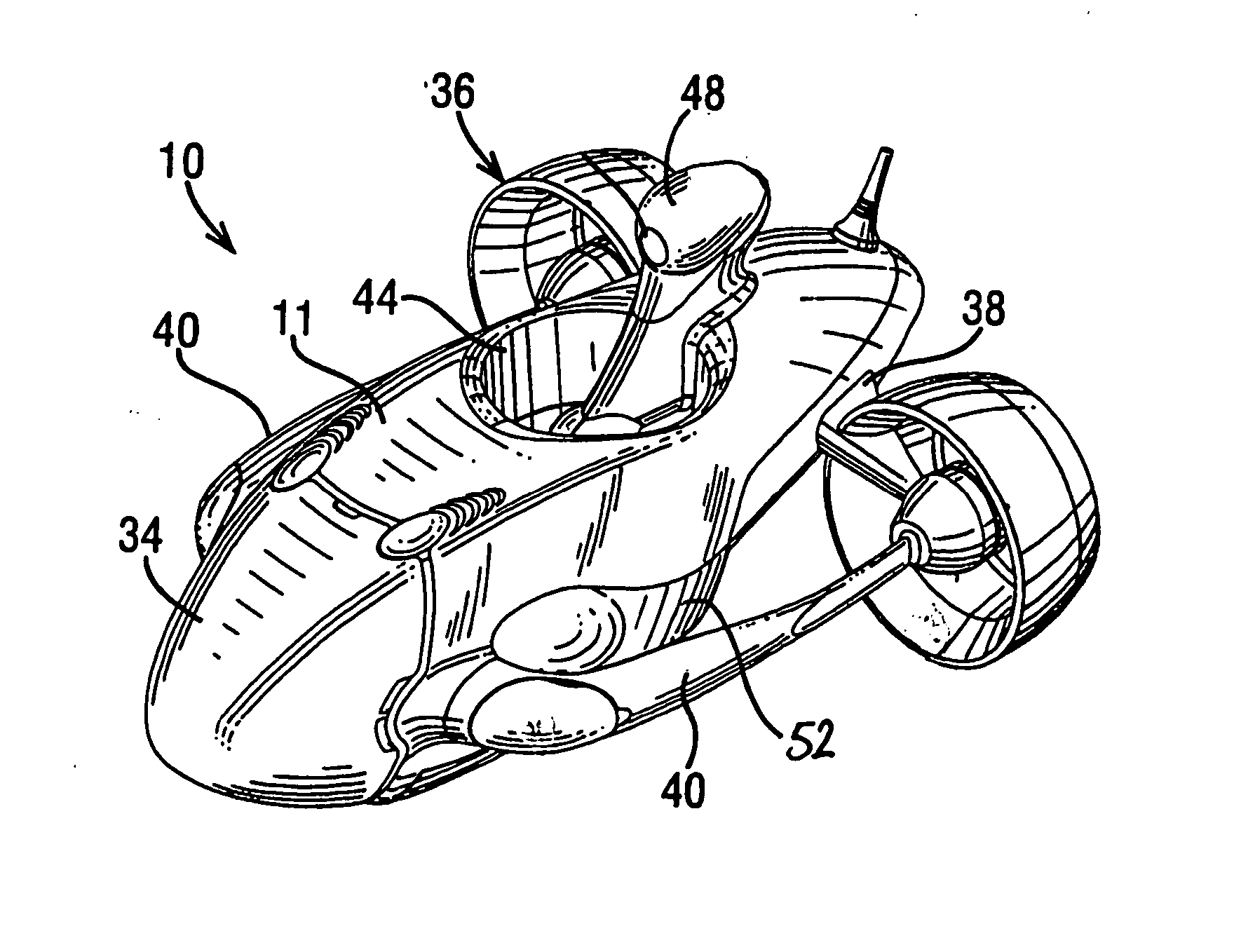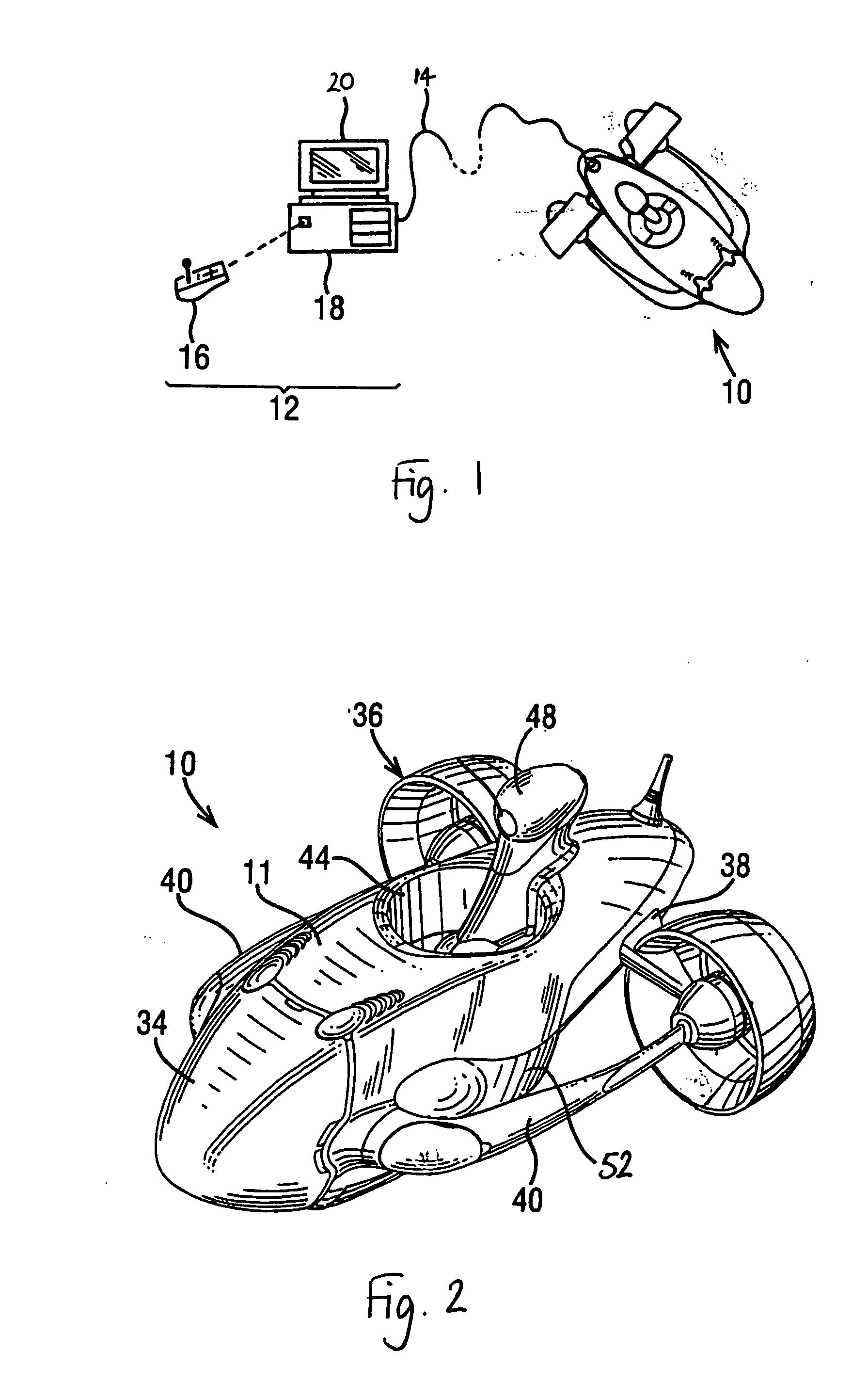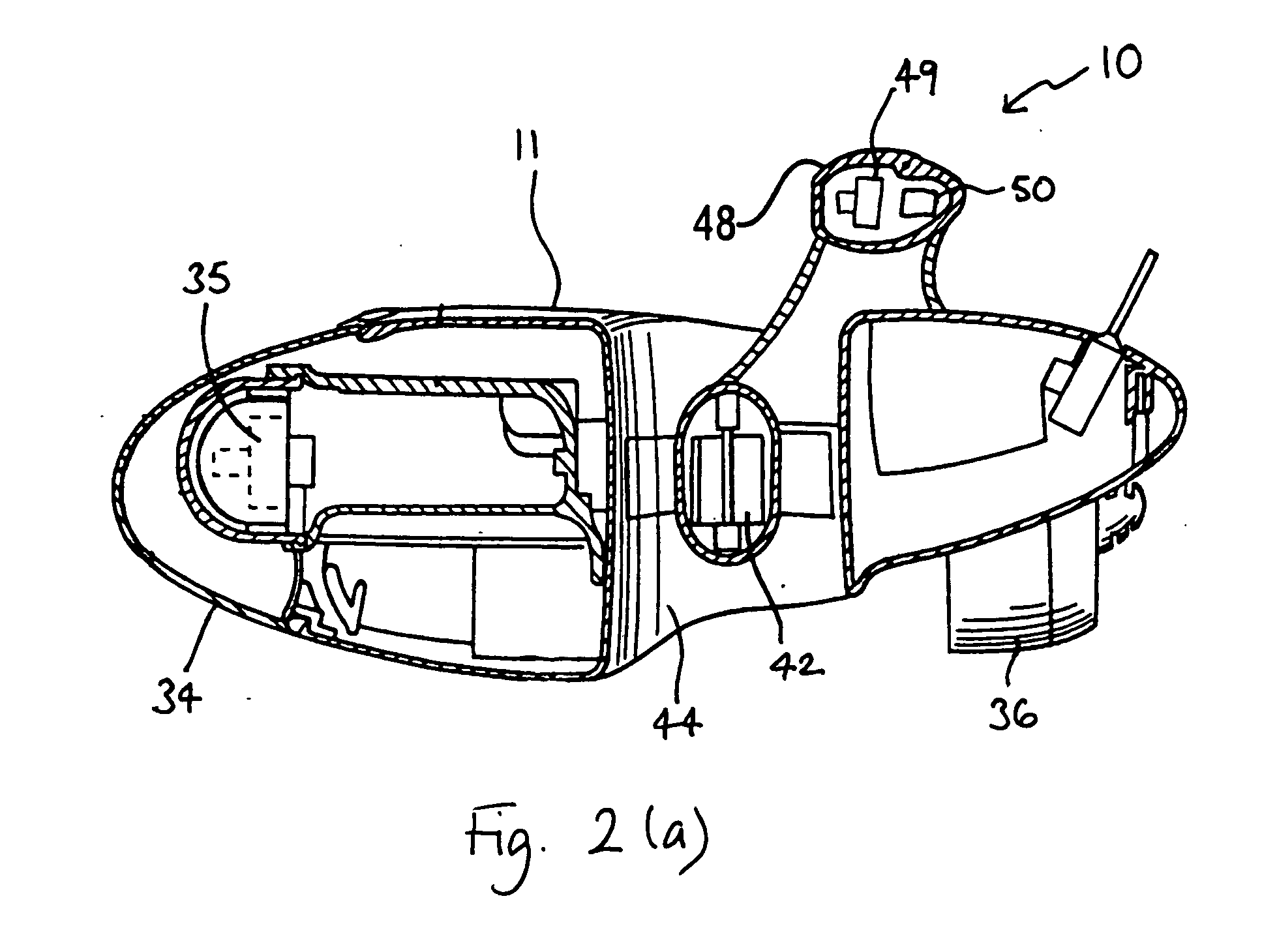Location and movement of remote operated vehicles
a technology of remote operated vehicles and remote control, which is applied in the direction of propulsive elements, underwater equipment, vessel construction, etc., can solve the problems of insufficient accuracy of measurements, system is less well suited to the guidance of rov system fish, and is not practical for users, so as to avoid further damage or outright loss, and facilitate the recovery of fish
- Summary
- Abstract
- Description
- Claims
- Application Information
AI Technical Summary
Benefits of technology
Problems solved by technology
Method used
Image
Examples
first embodiment
[0087] First Embodiment
[0088] According to a first embodiment of the present invention, the ROV system described above is provided with a global positioning system (GPS) receiver mounted on or in the fish 10. By using the receiver to interrogate the GPS satellites orbiting the earth, the fish 10 is able to determine its absolute position in the known manner of using GPS. As is well-known, a typical GPS receiver does not operate accurately underwater. Thus, the GPS receiver can be used to determine the position of the fish 10 when it is on the surface of a body of water. To facilitate this, the GPS receiver is preferably mounted on the top surface of the fish 10 to ensure that it is above the water level as the fish floats on, or moves along, the surface. In the illustrated embodiment, this may conveniently be achieved by mounting the GPS receiver 50 in the periscope portion 48 of the fish 10 (see FIG. 2(a)). Alternatively, the fish 10 may be provided with any upwardly protruding por...
second embodiment
[0094] Second Embodiment
[0095] The embodiment of FIG. 3 is a configuration in which the position data is sent along the umbilical cable. However, this is not possible in the event of the cable 14 breaking, or deliberately being detached by the user, or not being used from the outset.
[0096]FIG. 4 shows an alternative embodiment in which the RF transmitter 112 in the fish 10 broadcasts to the RF receiver 108 in the topside 12 by a wireless link through air. Both transmitter 112 and receiver 108 are hence equipped with aerials 116. This wireless link allows the fish 10 to send position data to the topside 12 without using the umbilical cable 14, so that data can be communicated if the cable 14 is broken, as shown in FIG. 4. To ensure clear communication the RF transmitter 116 is preferably located on an upwardly protruding part of the fish 10, for example the periscope portion 48 shown in FIG. 2.
[0097] Although FIGS. 3 and 4 present the sending of the position data via the umbilical ...
third embodiment
[0098] Third Embodiment
[0099] Guidance of the fish can be further improved by providing a second GPS receiver in the topside.
[0100]FIG. 5 shows a block diagram of this embodiment. The same components are depicted as those in FIGS. 3 and 4, with the addition of a GPS receiver 118 in the topside computer unit 16, which is in communication with the processor 106 of the computer unit 18. Alternatively, the GPS receiver 118 can be mounted elsewhere on or in the topside, with a data link to the topside processor 106.
[0101] This embodiment allows the topside 12 to measure its absolute position by using its GPS receiver 118. The resulting measurement is supplied as position data to the topside processor 106, where it can be compared with position data supplied by the fish 10. By comparing the position data from the two units, the processor 106 can determine their relative position. The comparison may be conducted by any suitable method, such as the use of an appropriate piece of software,...
PUM
 Login to View More
Login to View More Abstract
Description
Claims
Application Information
 Login to View More
Login to View More - R&D
- Intellectual Property
- Life Sciences
- Materials
- Tech Scout
- Unparalleled Data Quality
- Higher Quality Content
- 60% Fewer Hallucinations
Browse by: Latest US Patents, China's latest patents, Technical Efficacy Thesaurus, Application Domain, Technology Topic, Popular Technical Reports.
© 2025 PatSnap. All rights reserved.Legal|Privacy policy|Modern Slavery Act Transparency Statement|Sitemap|About US| Contact US: help@patsnap.com



